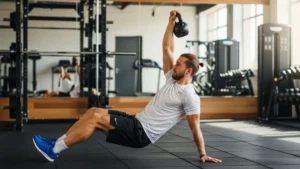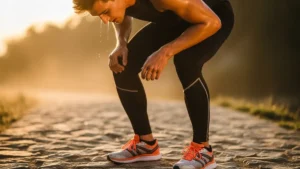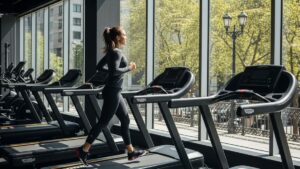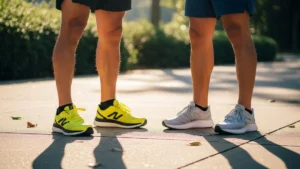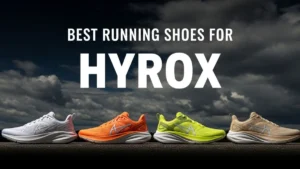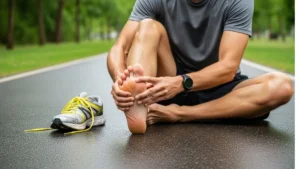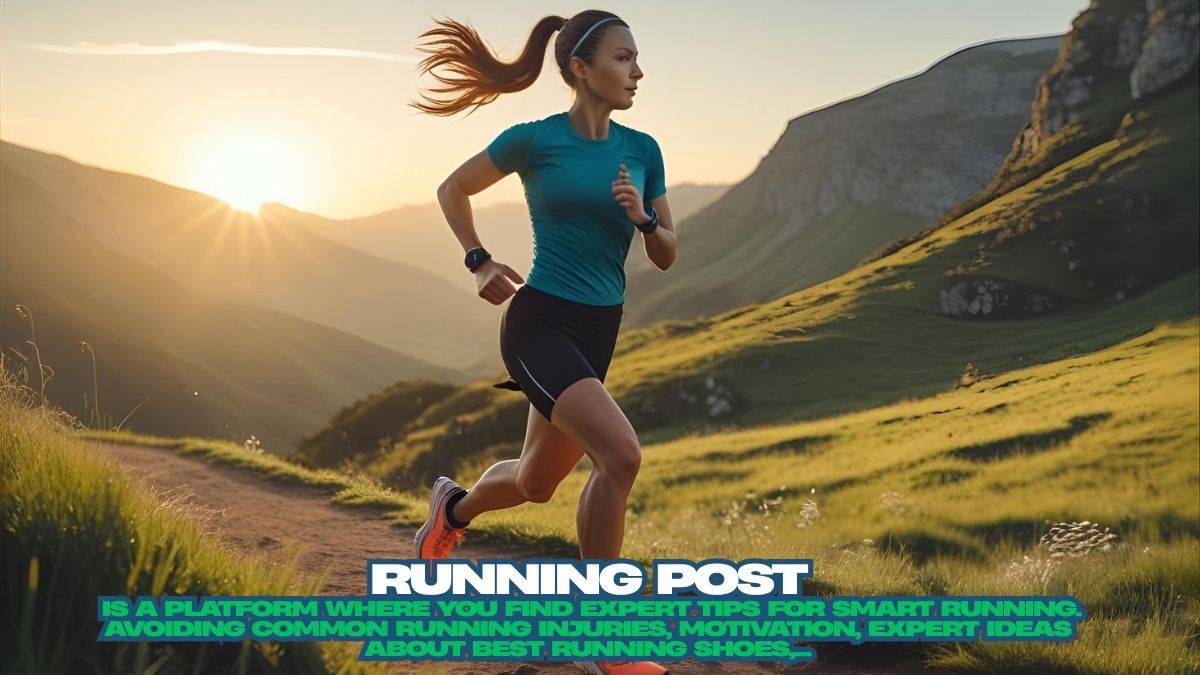
Running is one of the oldest and most natural forms of exercise known to humankind. From sprinting for survival in prehistoric times to marathon races in modern cities, running has evolved into a widely embraced physical activity that promotes health, mental clarity, and personal growth. In this comprehensive guide on “Running Post,” we’ll explore the essential aspects of running, from its health benefits to training plans, post-run care, injury prevention, and motivation tips.
Why Running is More Than Just Exercise
Running is not just about putting one foot in front of the other. It’s a full-body workout, a mental refresh button, and for many, a lifestyle. Whether you’re running for fitness, stress relief, competition, or fun, it offers numerous benefits:
-
Cardiovascular Health: Running improves heart function, reduces blood pressure, and increases circulation.
-
Weight Management: Regular running burns calories and helps in fat loss.
-
Mental Health Boost: It releases endorphins that reduce anxiety and depression.
-
Bone and Joint Strength: Contrary to popular belief, moderate running strengthens bones and joints over time.
-
Increased Stamina and Endurance: Over time, consistent running enhances overall physical performance.
User Experience About Running Post “Runners appreciate how Running Post crafts personalized training plans that adjust based on individual fitness level and goals—whether you’re training for a 5K or an ultra-distance event“ by (DaVinciHelix).
Preparing Before the Run
To get the most out of your run and avoid injuries, preparation is key. Here’s what you should focus on:
1. Proper Footwear
Invest in a good pair of running shoes that suit your foot type and gait. The right shoes can make a world of difference in comfort and performance.
2. Warm-Up Routine
Spend at least 5-10 minutes warming up your body. Light jogging, dynamic stretches (like leg swings and arm circles), and mobility exercises can help prepare your muscles.
3. Hydration
Drink water 30–60 minutes before your run. For longer runs, you may need to bring water or an electrolyte drink.
4. Nutrition
Avoid heavy meals before running. Instead, opt for a light snack with complex carbs and a little protein if you’re running longer than 30 minutes.
Running Techniques That Matter
Running efficiently is vital to avoid fatigue and injury. Here are some core techniques every runner should practice:
1. Posture
Keep your back straight, shoulders relaxed, and head aligned with your spine. This helps reduce tension and increases oxygen intake.
2. Stride and Cadence
Aim for shorter, quicker steps to reduce impact on joints. An ideal cadence is about 170–180 steps per minute.
3. Breathing
Practice rhythmic breathing – for example, inhaling for two steps and exhaling for two. This increases oxygen supply and keeps you steady.
4. Arm Movement
Keep your arms bent at 90 degrees, swinging forward and back – not across your body. This adds momentum without wasting energy.
Post-Run Care: What to Do After the Run
This is where the “Running Post” really comes into play. Recovery is just as important as the run itself.
1. Cool Down
Gradually decrease your pace until you are walking, and do this for about 5 minutes. This helps your heart rate return to normal and prevents dizziness.
2. Stretching
Spend at least 10 minutes stretching the major muscle groups: hamstrings, quads, calves, hips, and lower back.
3. Hydrate Again
Replenish fluids lost during your run. Consider a sports drink if you’ve been running for more than an hour.
4. Nutrition
Eat a balanced meal rich in protein and carbohydrates within an hour post-run. This helps muscle recovery and energy restoration.
5. Rest and Sleep
Give your body time to heal, especially after a long or intense run. Quality sleep is one of the best recovery tools available.
Avoiding Common Running Injuries
Injuries can sideline even the most seasoned runners. However, most can be prevented with proper practices:
-
Runner’s Knee: Often due to overuse or improper shoes. Strengthening quads and choosing the right footwear helps.
-
Shin Splints: Caused by sudden increases in distance or poor running surfaces. Ease into training and mix in rest days.
-
Plantar Fasciitis: Heel pain from tight foot muscles. Stretch feet and calves, and consider arch supports.
-
IT Band Syndrome: Pain on the outside of the knee due to tight hip muscles. Incorporate foam rolling and hip strengthening exercises.
Creating a Personalized Running Plan
There is no one-size-fits-all approach to running. Your plan should match your goals, whether you’re aiming to run your first 5K or a full marathon.
1. Start Slow (for Beginners)
Begin with a run-walk method. For example, run for 1 minute and walk for 2 minutes, gradually increasing running time.
2. Follow a Schedule
Aim for 3–5 runs per week. Include easy runs, long runs, and interval training.
3. Cross-Train
Incorporate cycling, swimming, or strength training once or twice a week to avoid burnout and strengthen other muscle groups.
4. Listen to Your Body
If you’re feeling pain, tiredness, or unusual soreness, take a rest day. Overtraining can lead to long-term issues.
Staying Motivated on Your Running Journey
It’s easy to get discouraged, especially when progress seems slow. Here are some tips to keep going:
-
Set Small Goals: Whether it’s running an extra five minutes or reaching a new distance, celebrate your milestones.
-
Track Your Runs: Use apps like Strava, Nike Run Club, or Garmin Connect for motivation and progress tracking.
-
Join a Running Group: Running with others keeps you accountable and makes it fun.
-
Sign Up for Races: Even a 5K charity race can boost your enthusiasm and give you something to train for.
Running Post and Mental Health: The Hidden Power
The “runner’s high” isn’t a myth. Running significantly contributes to emotional well-being. Here’s how:
-
Stress Relief: Running decreases cortisol (stress hormone) and clears the mind.
-
Improved Mood: Endorphins released during running enhance your sense of well-being.
-
Better Sleep: Regular running improves sleep quality and helps regulate sleep cycles.
-
Boosted Self-Esteem: Achieving running goals boosts confidence and motivation.
Some Ideas About Best Running Shoes
Running shoes are not one-size-fits-all. The best choice depends on your running style, terrain, budget, and foot type. Whether you’re a seasoned trail runner, a beginner looking for a value pick, or someone needing extra arch support, this article highlights the best running shoes of 2025, categorized for your specific needs — all with estimated price ranges.
Best Trail Running Shoes (For Off-Road Terrain)
Trail running shoes are made for grip, stability, and durability across dirt, rocks, and uneven paths. Here are the best choices for 2025:
1. Salomon Speedcross 6 – $140
-
Aggressive tread for muddy trails
-
Snug, secure fit
-
Excellent durability
What User Say About These Shoes "I think I'm on my fifth pair of Salomon Speedcross 6. I'm a fan and use them for almost all my trail runs,though I avoid using them for pavement." by (RhodySeth)
2. Hoka Speedgoat 5 – $155
-
Soft yet responsive cushioning
-
Grippy Vibram outsole
-
Lightweight and great for ultra-distances
User Experience “Just purchased my second pair of Hoka Speedgoat 5 and I love them. They’re discounted as heck right now too. Thanks for the Hoka Speedgoat 5 write up.” By the (Lake_Far).
3. Altra Lone Peak 8 – $140
-
Foot-shaped toe box for natural movement
-
Zero-drop platform for balanced running
-
Comfortable for long trail adventures
4. Brooks Cascadia 17 – $140
-
Stability-focused trail shoe
-
Rock plate for foot protection
-
Ideal for varied terrain
5. La Sportiva Bushido II – $145
-
Built for technical mountain trails
-
Superior grip and lateral stability
-
Sleek, close-fitting design
Best Budget-Friendly Running Shoes (Under $100)
If you’re just starting out or on a tight budget, these shoes offer comfort and performance without breaking the bank.
1. ASICS Gel-Contend 8 – $65
-
Good cushioning for beginner runners
-
Durable outsole for pavement and treadmill
-
Simple and reliable
What user say About ASICS Gel-Contend 8 “I’ve used two models from Asics – ASICS Gel-Contend 8 and Superblast 2. Both of them are fantastic pair. Gel nimbus is for easy and recovery runs whereas Superblast 2 is for Tempo and long runs” by (WorriedAdagio).
2. Saucony Cohesion 16 – $70
-
Comfortable for everyday running
-
Great shock absorption
-
Very lightweight
3. Nike Revolution 7 – $75
-
Soft foam midsole for everyday comfort
-
Stylish and versatile
-
Ideal for walking and casual jogging
4. Adidas Duramo SL – $70
-
Lighmotion cushioning for responsiveness
-
Breathable mesh upper
-
Affordable and modern design
5. New Balance 411v3 – $60
-
Excellent for walking or light runs
-
Lightweight cushioning
-
Reliable grip on various surfaces
Best Running Shoes for Flat Feet & Arch Support
Runners with flat feet or overpronation need structured shoes with stability features and arch support to prevent injury.
1. Brooks Adrenaline GTS 23 – $140
-
GuideRails support system
-
Soft cushioning and smooth transitions
-
One of the most popular support shoes
What User Say About
2. ASICS Gel-Kayano 31 – $165
-
Maximum stability and plush ride
-
Helps correct overpronation
-
Great for long distances
3. New Balance Fresh Foam X 860v13 – $140
-
Dual-density foam for structured support
-
Durable and breathable
-
Comfortable ride for moderate overpronators
4. Hoka Arahi 7 – $145
-
Lightweight with stability-focused J-Frame design
-
Responsive yet cushioned
-
Ideal for daily training
5. Saucony Guide 17 – $140
-
PWRRUN+ foam for responsive support
-
Medial post for stability
-
Smooth and secure feel
Final Tips for Buying Running Shoes
-
Prices may vary slightly depending on size, color, and location.
-
Try shoes in-store if possible to ensure proper fit.
-
Look out for seasonal sales on official brand websites or trusted retailers like Running Warehouse, Zappos, or Road Runner Sports.
Summary Table: Running Shoes & Prices
| Category | Shoe Name | Price (USD) |
|---|---|---|
| Trail Running | Salomon Speedcross 6 | $140 |
| Hoka Speedgoat 5 | $155 | |
| Altra Lone Peak 8 | $140 | |
| Brooks Cascadia 17 | $140 | |
| La Sportiva Bushido II | $145 | |
| Budget Running | ASICS Gel-Contend 8 | $65 |
| Saucony Cohesion 16 | $70 | |
| Nike Revolution 7 | $75 | |
| Adidas Duramo SL | $70 | |
| New Balance 411v3 | $60 | |
| Flat Feet/Arch Support | Brooks Adrenaline GTS 23 | $140 |
| ASICS Gel-Kayano 31 | $165 | |
| New Balance 860v13 | $140 | |
| Hoka Arahi 7 | $145 | |
| Saucony Guide 17 | $140 |
Environmental Considerations for Runners
Responsible running is good for you and the planet:
-
Choose Green Spaces: Parks, trails, and tracks are safer and better for joints than pavement or concrete.
-
Be Visible: Wear reflective gear when running in low light or urban areas.
-
Respect Nature: Don’t litter on trails, and avoid disturbing wildlife.
-
Adapt to Weather: Stay hydrated in summer and layer up in winter. Avoid running in extreme conditions.
Conclusion: Embrace the Running Lifestyle
“Running Post” is more than an end-of-run routine – it represents a mindset. Running brings structure, discipline, and joy into your life. Whether you’re a casual jogger or a marathoner, every step you take contributes to a stronger body and a clearer mind.
So lace up, step out, and embrace the journey. The road ahead isn’t just about miles—it’s about growth, grit, and the endless rewards that come after each run.
FAQs
What is Running Post?
Running Post is an online platform or service that provides runners with community-based features like training logs, route sharing, virtual races, gear reviews, running news, and social interactions related to running. It acts like a social media hub for runners.
Is Running Post free to use?
Yes, Running Post typically offers free access to basic features like creating a profile, logging runs, and engaging with the community. Some premium features or advanced analytics may require a subscription or one-time payment.
Can I track my runs using Running Post?
Yes, many users use Running Post to log their mileage, time, route, and pace. It often integrates with GPS watches like Garmin, Fitbit, or apps like Strava and Nike Run Club.
What kind of running content is available?
Users can find content like:
-
Running tips
-
Gear reviews
-
Personal running stories
-
Nutrition guides
-
Training plans for 5K, 10K, half-marathon, and full marathon
Is Running Post good for beginners?
Absolutely! Running Post provides beginner-friendly guides, motivational content, and forums to ask questions. Many beginners find it helpful for staying accountable and inspired.
Can I connect with other runners?
Yes, Running Post is community-driven, allowing users to follow, comment, like, and message other runners. It also hosts running groups and forums based on interests, regions, or race types.
How do I join virtual races on Running Post?
Virtual races are posted on the platform regularly. Users can:
-
Register for a race
-
Run on their own time and route
-
Submit results via GPS or manually
-
Earn digital badges or medals
Can I find shoe or gear recommendations on Running Post?
Yes, one of the highlights is user-generated gear reviews, especially for running shoes, fitness wearables, and nutrition products. These come with personal experiences and ratings.
Is there a mobile app for Running Post?
Depending on the current platform development, some versions may have a mobile app or mobile-friendly website for logging runs and interacting on the go.
How does Running Post compare to Strava or Nike Run Club?
While Strava and Nike Run Club focus more on performance tracking, Running Post emphasizes community engagement, lifestyle content, and user storytelling, making it a complementary platform rather than a replacement.

